Frederic R. Hopp
Capturing Perspectives of Crowdsourced Annotators in Subjective Learning Tasks
Nov 16, 2023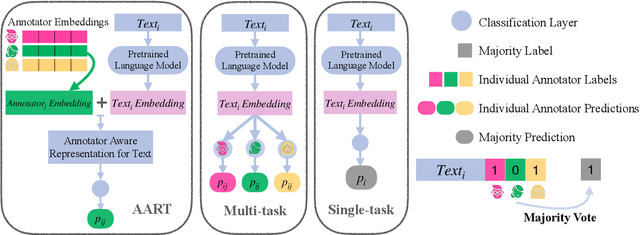

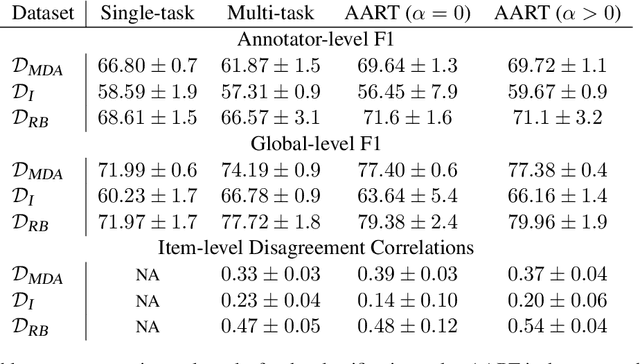

Abstract:In most classification models, it has been assumed to have a single ground truth label for each data point. However, subjective tasks like toxicity classification can lead to genuine disagreement among annotators. In these cases aggregating labels will result in biased labeling and, consequently, biased models that can overlook minority opinions. Previous studies have shed light on the pitfalls of label aggregation and have introduced a handful of practical approaches to tackle this issue. Recently proposed multi-annotator models, which predict labels individually per annotator, are vulnerable to under-determination for annotators with small samples. This problem is especially the case in crowd-sourced datasets. In this work, we propose Annotator Aware Representations for Texts (AART) for subjective classification tasks. We will show the improvement of our method on metrics that assess the performance on capturing annotators' perspectives. Additionally, our approach involves learning representations for annotators, allowing for an exploration of the captured annotation behaviors.
Noise Audits Improve Moral Foundation Classification
Oct 13, 2022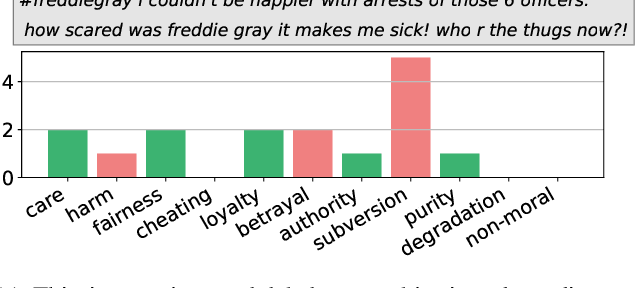

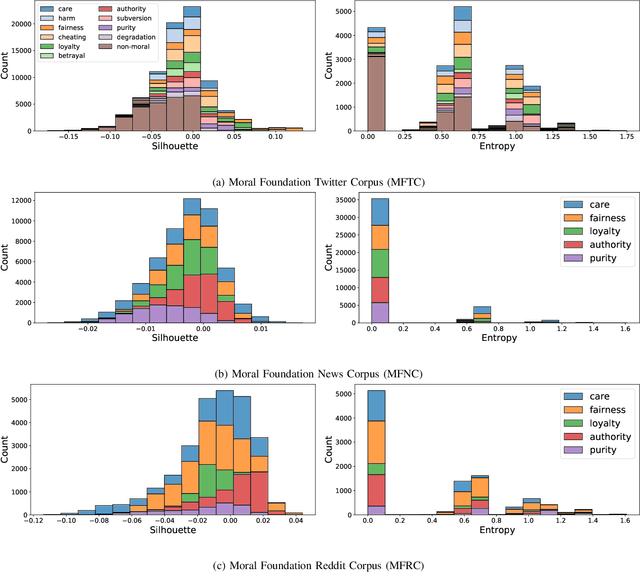
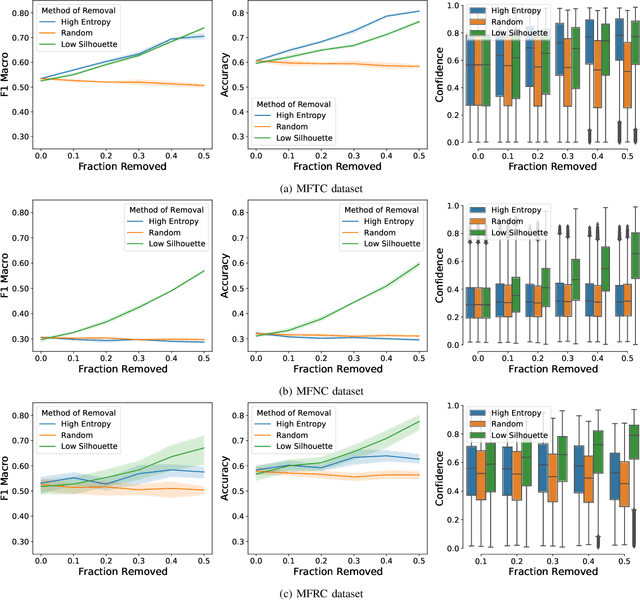
Abstract:Morality plays an important role in culture, identity, and emotion. Recent advances in natural language processing have shown that it is possible to classify moral values expressed in text at scale. Morality classification relies on human annotators to label the moral expressions in text, which provides training data to achieve state-of-the-art performance. However, these annotations are inherently subjective and some of the instances are hard to classify, resulting in noisy annotations due to error or lack of agreement. The presence of noise in training data harms the classifier's ability to accurately recognize moral foundations from text. We propose two metrics to audit the noise of annotations. The first metric is entropy of instance labels, which is a proxy measure of annotator disagreement about how the instance should be labeled. The second metric is the silhouette coefficient of a label assigned by an annotator to an instance. This metric leverages the idea that instances with the same label should have similar latent representations, and deviations from collective judgments are indicative of errors. Our experiments on three widely used moral foundations datasets show that removing noisy annotations based on the proposed metrics improves classification performance.
 Add to Chrome
Add to Chrome Add to Firefox
Add to Firefox Add to Edge
Add to Edge